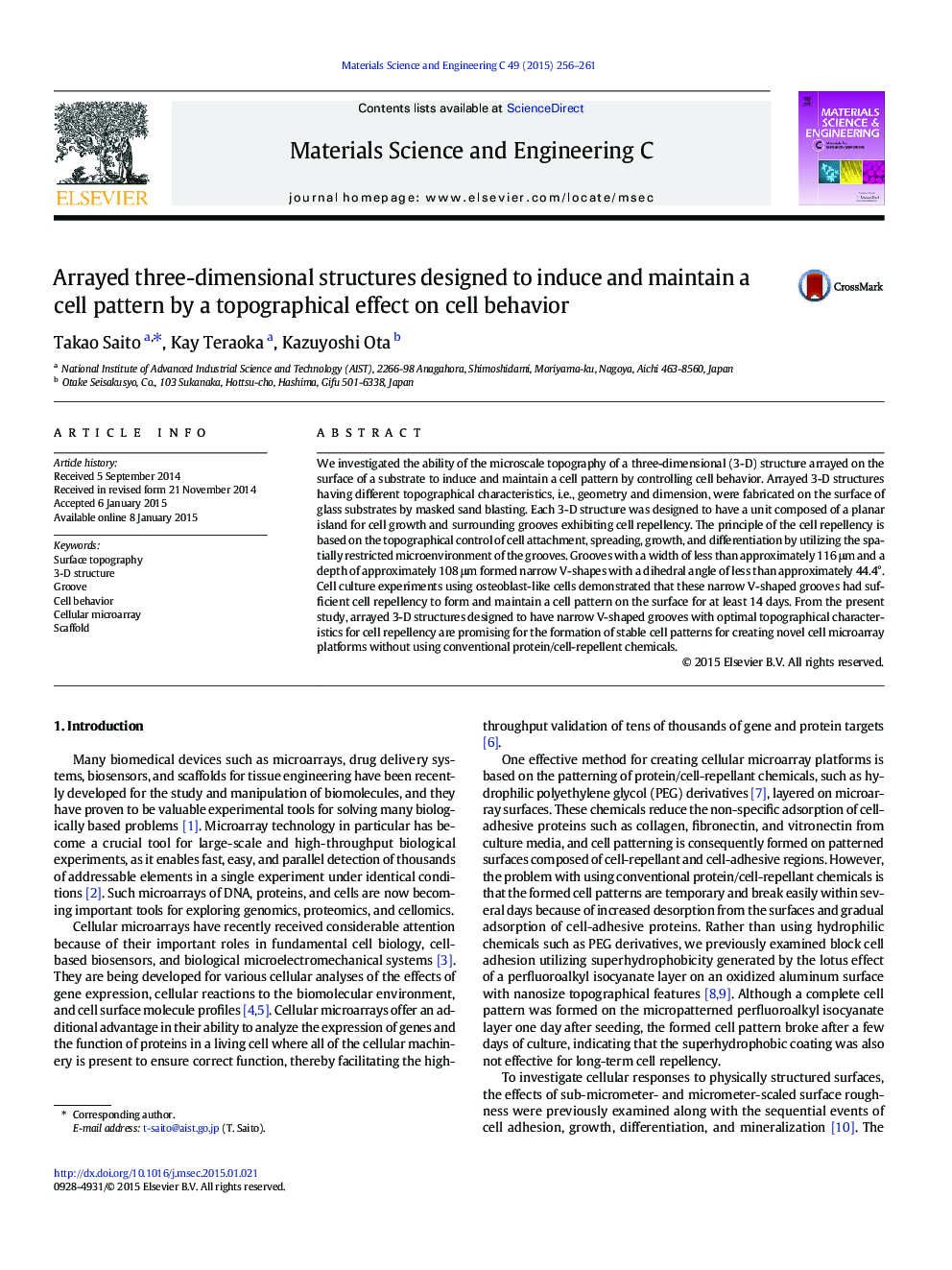| Article ID | Journal | Published Year | Pages | File Type |
|---|---|---|---|---|
| 1428177 | Materials Science and Engineering: C | 2015 | 6 Pages |
•We present a cellular microarray having topographically designed 3-D structures.•The 3-D structure is characterized by narrow V-shaped grooves for cell repellency.•A cell pattern is formed and kept on the arrayed 3-D structure for at least 14 days.•The 3-D structure is also applicable for scaffolds and biomedical devices.
We investigated the ability of the microscale topography of a three-dimensional (3-D) structure arrayed on the surface of a substrate to induce and maintain a cell pattern by controlling cell behavior. Arrayed 3-D structures having different topographical characteristics, i.e., geometry and dimension, were fabricated on the surface of glass substrates by masked sand blasting. Each 3-D structure was designed to have a unit composed of a planar island for cell growth and surrounding grooves exhibiting cell repellency. The principle of the cell repellency is based on the topographical control of cell attachment, spreading, growth, and differentiation by utilizing the spatially restricted microenvironment of the grooves. Grooves with a width of less than approximately 116 μm and a depth of approximately 108 μm formed narrow V-shapes with a dihedral angle of less than approximately 44.4°. Cell culture experiments using osteoblast-like cells demonstrated that these narrow V-shaped grooves had sufficient cell repellency to form and maintain a cell pattern on the surface for at least 14 days. From the present study, arrayed 3-D structures designed to have narrow V-shaped grooves with optimal topographical characteristics for cell repellency are promising for the formation of stable cell patterns for creating novel cell microarray platforms without using conventional protein/cell-repellent chemicals.
